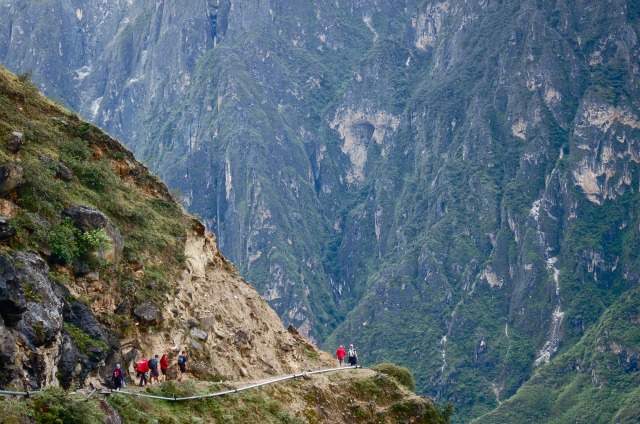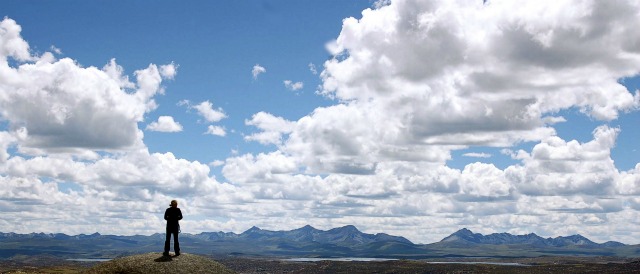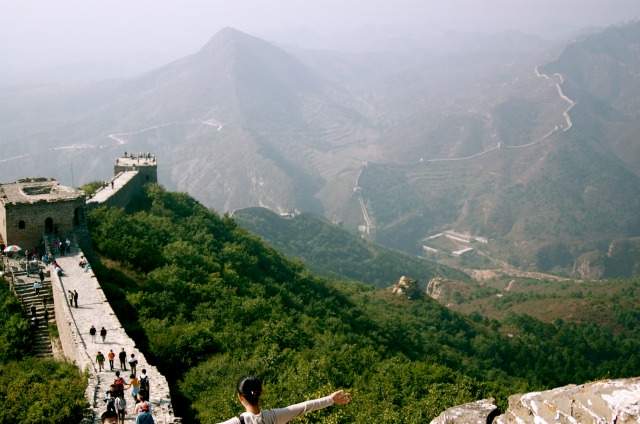I consider myself an adventurer. As I write this, I am just hours away from getting my scuba license and just a day away from filming my first rock climbing adventure. I’ve decided that the best way to get the most out of my life is to live it to the fullest extent possible, never wondering if I could do something or if I had the skills and knowledge to succeed. Instead, just do it and find out. Try it and see what happens. I took that same attitude when I decided to move and live in China for a year. It turned out to be one of the best years of my life. Not only did I feel like I really delved into the culture, but I also got to explore a lot of what the country has to offer to travelers, especially on the adventurous and off-the-beaten-path side of things.
Despite its increasing openness to foreign visitors and expanding ease of travel, China still remains a relatively untamed country with plenty of wild adventures to embark on. Unfortunately, as the country develops its tourism, it’s also taking the daring out of as many of its activities as it can, mostly through trams, staircases, and infrastructure. Progress is good for standard-of-living, but often impedes the true adventurer from the reason they’re there in the first place. However, there are still plenty of adventures left. Check out these to pump up your adrenaline and stoke your own adventurous fire:
Hike the Tiger Leaping Gorge
Breathtakingly beautiful and at times strenuous, the two-day hike along Tiger Leaping Gorge is famous for the magnitude of the gorge itself. As one of the deepest gorges in the world, the short excursion takes hikers to the edge of cliffs, up numerous switchbacks, and through local villages, making it one of the most authentically beautiful experiences in one of China’s most beautiful provinces, Yunnan.
The first day of the hike on the upper trail (the lower trail is for tourist buses and photo-snapping shutterbugs. Avoid.) takes travelers up a steep hillside that is horribly misnamed 28 Bends, because it must have at least sixty. You’ll twist and turn with the serpentine trail, resting every third bend to catch your breath and watch local farmers drive their donkeys up the mountain. Make sure to smirk at other travelers who took the easy way out and paid too high of a price to catch a ride on a local farmer’s horse (it’s all in good fun).
Once you’ve reached the top, you’ll have an astonishing view of the gorge and the surrounding mountains and the trail will take you through a small, hillside village. Stop at Halfway House where you can throw back some baijiu with other hikers. The small hostel is perfect for viewing waterfalls cascading on the other side of the gorge, plummeting down to the river below.
Day two takes you along steeper dropoffs and epic waterfalls – the entire hike is a photographer’s dream. Most hikers will end day two by hitting the end of the trail and catching a bus back to the beginning. But, mark my words, do not do this. Grab a hostel at the trail’s end and rise the next day for the third (and arguably finest) day of hiking. Instead of climbing the gorge, plunge down towards the roaring Yangtze River below. Trails cut through local fields before digging through the sandstone of the gorge’s mountainsides. Near the river, you’ll be able to see the area where the gorge gets its name, where legend says a tiger leapt the expansive gorge (no small feat). You’ll be able to get dangerously close to the river, where tumultuous rapids would widen the eyes of even the most experienced whitewater champ. But it’s the hike out of the gorge that is the true adventure.
Unless you come from the way you came, which is a relatively simple hike, you’ll be headed straight up a nearly 90 degree angle, often by clambering up ladders five to dix stories tall. With no ropes or harness, the climb would be outlawed in every American state, but in China, tourism litigation isn’t a huge concern (apparently). If you survive the ladders, you’ll still have to hug the side of the cliffs as you tiptoe along cliff-edges (often without railings). Keep your balance and your wits about you, because, hey, you’re an adventurer. Once you’re done, You’ll look back on your three days in Tiger Leaping Gorge as some of the best of your entire trip.
Motor Along the Sichuan-Tibet Highway
The roads of progress are literally paving themselves toward western China, one the country’s still most underdeveloped regions. While it’s Tibet and Xinjiang that grab headlines for ethnic unrest and governmental control (along with extreme adventure travel spots), there are still areas of Sichuan that are unvisited by many travelers, both foreign and domestic. Chengdu, the capital of the province and the cultural center of everything west and south of Xi’an, will be your starting point.
Take a day or two to hug some pandas if you must, but grab a bus and get to Kangding, a beautiful, mostly Tibetan city nestled into its own small gorge. This is the beginning of what will be one of the best road adventures of all your travels. From Kangding, take a minibus (usually holds 5-6 people) and tell the driver to get to Litang. Then buckle up, put some extra padding beneath your butt cheeks, and just try to take a nap. The rough road (or the lack thereof) and the breathtaking scenery will keep your eyes peeled and your butt stinging.
The drive to Litang may take up to 9-10 hours, but with precipitous cliffs, open fields where you don’t know where the road even went, and small Tibetan villages abounding, its an amazing trip. While still residing on the Sichuan side, Litang is Tibetan through and through. The town is one of the few places that the end-of-life Tibetan sky burial custom is still legal. In Tibetan Buddhism, it is believed that the sky is sacred, a place for both the body and spirit to depart to after death. And Sky Burials take the literal approach. Once someone has passed away, their body is chopped up before being allowed to be eaten by eager vultures, who will take their body to the sky. Travelers are sometimes allowed to view the burial, but its not for the faint of heart.
After Litang, the highway motors on into Tibet and to the capital of Lhasa. If you don’t want to deal with the bureaucratic hassle (and fees), head south towards Zhongdian (renamed Shangri-La for tourist purposes) and explore the beautiful province of Yunnan. Before you head to Lijiang, Dali, and the Tiger Leaping Gorge (above), head north and get even closer to the Tibetan border in the town of Deqin, which has some of the best hiking in the region. But don’t expect to be too warm. At an altitude of nearly 10,000 feet, the area in and around Deqin is often chilly and covered with snow, which makes the hikes and the views of the mountains on the edge of the Himalayas something to behold.
Hike Along the Great Wall
While less strenuous and more-often done than some of the other adventures on this list, hiking the Great Wall doesn’t have to be your standard tourist trap filled with t-shirts (the saying “He who has never been to the Great Wall is not a true man”, may be slightly hyperbolic). Head to either Jinshanling or Simatai and then head in the opposite direction for the 10k walk to the other. It’s one of the few Great Wall hikes that begins in one location ends in another. Unfortunately, some planned “restoration” is happening in and around the Simatai portion of the Wall, which, if recent history has taught us anything, could mean resorts, golf courses, or shopping malls (keeping my fingers crossed that that isn’t the case). But, for now, this portion of the Great Wall remains one of the best ways to experience the historic landmark.
For the adventurous runners, explore the Great Wall in a unique way by partaking in the Great Wall Marathon. Held every year (usually in May), the Great Wall Marathon may test your running ability (including how well you run up and down thousands of steps) but it will also give you a very unique Great Wall experience. The entire race isn’t held on the Wall, but that’s a good thing. The race will wind and turn its way through surrounding fields and villages, giving you an even more local view of the area.


